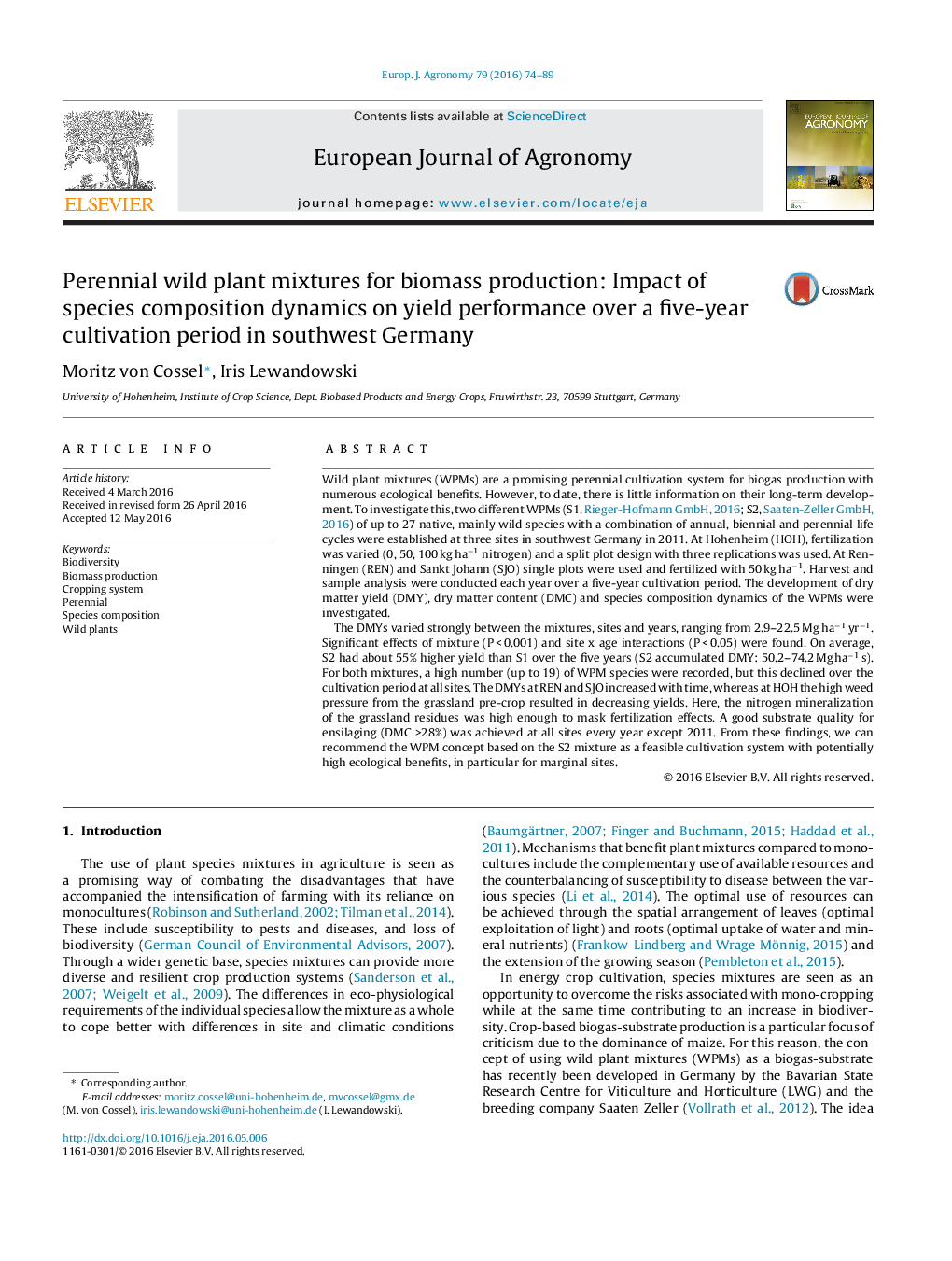| Article ID | Journal | Published Year | Pages | File Type |
|---|---|---|---|---|
| 6374228 | European Journal of Agronomy | 2016 | 16 Pages |
Abstract
The DMYs varied strongly between the mixtures, sites and years, ranging from 2.9-22.5 Mg haâ1 yrâ1. Significant effects of mixture (P < 0.001) and site x age interactions (P < 0.05) were found. On average, S2 had about 55% higher yield than S1 over the five years (S2 accumulated DMY: 50.2-74.2 Mg haâ1 s). For both mixtures, a high number (up to 19) of WPM species were recorded, but this declined over the cultivation period at all sites. The DMYs at REN and SJO increased with time, whereas at HOH the high weed pressure from the grassland pre-crop resulted in decreasing yields. Here, the nitrogen mineralization of the grassland residues was high enough to mask fertilization effects. A good substrate quality for ensilaging (DMC >28%) was achieved at all sites every year except 2011. From these findings, we can recommend the WPM concept based on the S2 mixture as a feasible cultivation system with potentially high ecological benefits, in particular for marginal sites.
Related Topics
Life Sciences
Agricultural and Biological Sciences
Agronomy and Crop Science
Authors
Moritz von Cossel, Iris Lewandowski,
